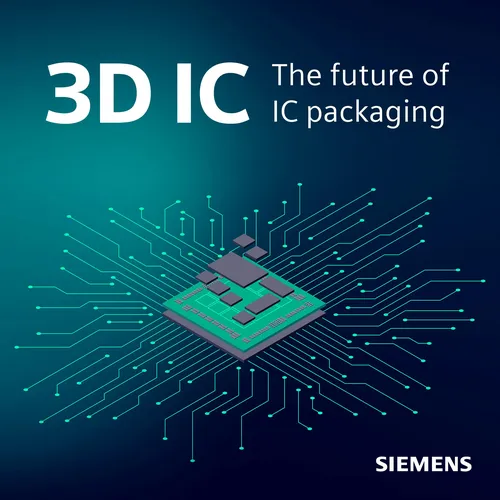Why Every 3D IC Needs a Test Vehicle Before It Hits Production
- Author
- Siemens Digital Industries Software
- Published
- Thu 04 Sep 2025
- Episode Link
- None
How do you ensure that cutting-edge 3D IC designs can actually be manufactured before investing millions in production?
What you’ll learn…
What test vehicles are and why they’re indispensable for validating manufacturability
How daisy chain structures pinpoint weaknesses in bumps, balls, and die connections
Who builds test vehicles: OSATs, foundries, or customers, and why it matters
How test vehicles strengthen collaboration between OEMs and OSATs
The hidden value of test vehicles in reliability, regulatory compliance, and risk mitigation
Where you’ll find it….
(02:00) What a test vehicle is when it’s needed
(03:20) Real-world example: testing embedded chips before mass production
(06:00) Who’s responsible for creating test vehicles?
(07:20) How do test vehicles factor into the relationship between the OSATs and the OEMs?
(09:25) The link between test vehicles and PCB design practices
(11:12) Beyond connectivity: heaters, capacitive structures, and stacked vias
(15:25) Automotive and regulatory requirements for reliability testing
(17:15) Why engineers shouldn’t design daisy chains by hand
More about this episode…
In this episode of the Siemens 3D IC Podcast, host John McMillan talks with Kendall Hiles, Senior 3D IC Product Specialist at Siemens EDA, about the critical role of test vehicles and daisy chain design tests in semiconductor innovation.
Unlike a final product, a test vehicle isn’t built to sell, it’s built to learn. Kendall Hiles explains how test vehicles act as manufacturing “test beds,” enabling engineers to validate new processes and technologies before scaling up to costly production runs.
The conversation dives into daisy chain design tests, a clever way of stringing together bumps and balls to measure connectivity and identify failure points with precision. Kendall also highlights when OSATs, foundries, or customers should take ownership of creating test vehicles, and how they factor into collaboration between OEMs and manufacturers.
Listeners will also hear why test vehicles are especially vital for automotive reliability and regulatory compliance, and why manual spreadsheet-driven daisy chain design is a risky practice in today’s complex 3D IC world.
For anyone working in semiconductor packaging, 3D IC design, or advanced manufacturing, this episode offers practical insight into improving yield, reducing risk, and accelerating innovation.
Connect with John McMillan
Connect with Kendall Hiles
